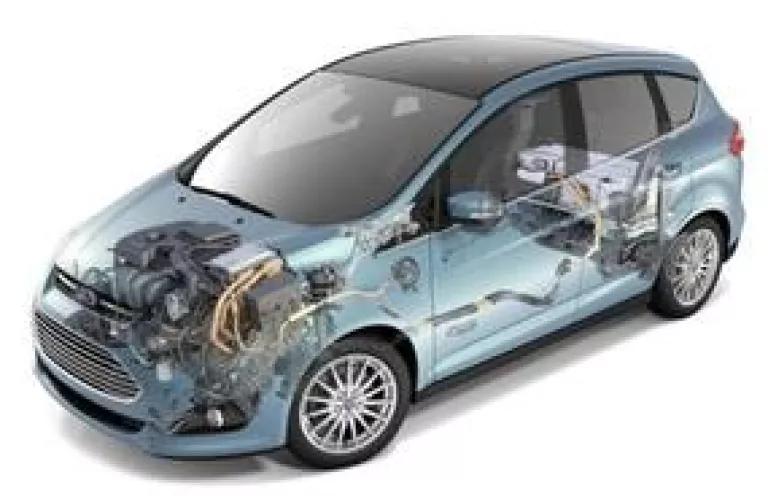
If you buy a car that costs over a $1,000 less a year to fuel than most other vehicles, shouldn’t you get better financing terms for potentially having more money to put toward paying off that vehicle?
Unfortunately, only one of the top 20 automotive lending institutions offers a loan product that rewards consumers for choosing more efficient vehicles. Hopefully that will change soon.
That’s the point I’ll be trying to make when I present a paper entitled “Accounting for Vehicle Efficiency in Auto Loans” at this Friday’s “Plug-in Electric Vehicle Financing Strategies Workshop” hosted by Governor Jerry Brown’s office, the California Plug-in Electric Vehicle Collaborative, and California State Treasurer Bill Lockyer in San Francisco.
Consider that the average American household spends $2,669 annually toward vehicle purchases and $2,655 on gasoline and motor oil. However, in determining a potential buyer’s ability to repay a loan, nearly all creditors focus exclusively on credit scores while ignoring the fuel expense that is -- on average -- equal to the yearly amount that goes toward paying off vehicle loans.
To further illustrate the point, Ford sells a version of the Explorer SUV for about the same price as the plug-in hybrid C-Max Energi. According to EPA estimates, a driver who chooses the plug-in hybrid will spend approximately $9,000 less on fuel over five years.

If the SUV driver is faced with the choice of filling up to drive to work, or missing an auto loan payment, the driver will pay at the pump. The additional expense required to fuel the less-efficient vehicle could be thought of as a second loan for $9,000 that has de facto seniority. Banks generally demand higher rates for junior loans, but if they know they’re first in line, they give better terms. Accordingly, they should give better terms to customers who aren’t committing themselves to years of pain at the pump.
Driving on electricity is like driving a 27 mile-per-gallon conventional vehicle on buck-a-gallon gas. Electricity prices are also much more stable than gasoline prices, which go through the roof every time there’s a hurricane in the Gulf of Mexico or violence in the Middle East. The Energy Information Agency predicts that electricity will remain at the buck-a-gallon equivalent mark for the next three decades. Auto loan terms should reward customers who lock in dollar-a-gallon equivalent fuel for life.
Automotive lenders are not the only creditors who generally fail to recognize the economics of efficiency. Banks largely ignore transportation expenses that vary with a home’s location. Analysis conducted by NRDC colleagues found foreclosure rates increase with a neighborhood’s vehicle ownership, after controlling for income. Banks overestimate risk of default in walkable neighborhoods, neglecting potentially reliable borrowers, and underestimate risk in automobile-dependent areas, perpetuating exposure to systemic defaults. Sound familiar? Think housing market collapse and global economic recession of 2008.
There is, however, reason to hope automotive finance may take a different path. U.S. Bank provides customers who buy new or used vehicles listed in EPA’s “Green Vehicle Guide” with a half-percent annual percentage rate discount. An executive of U.S. Bank reports the practice reduces risk in its loan portfolio and is a win for the bank, its customers, and the environment. Other smaller banks and credit unions also are pioneering green lending, providing green loans for various applications, including for home energy efficiency upgrades, rooftop solar, and efficient vehicles.
Meanwhile, a third of credit unions responding to a recent survey offered green auto loans. Because participation was voluntary, the survey cannot be extrapolated to sector-wide prevalence, but the research reveals a growing trend and some promising findings. The credit unions interviewed “consistently observed that in many instances there were no delinquencies for any of their green loans.” They also reported such loans were reliably profitable, helped differentiate their services from larger banks, increased membership, and attracted strong borrowers, especially in the 20-40 year old demographic, a key to ensuring future growth.
While it is intuitive that drivers who spend less on fuel have more money for debt repayment, additional research could also help determine the impact of selection bias; the credit unions survey suggests buyers of more efficient vehicles may simply be more reliable and credit-worthy borrowers.
Whatever the cause, any correlation between vehicle efficiency and loan performance should be reflected in loan terms. Accelerating the spread of lending practices that account for energy expenditures could reduce creditor risk, lower consumer borrowing costs, and improve the fuel economy of the vehicle fleet.
Reducing our dependence on oil is also good for our health and our environment. Driving an electric car on the average U.S. electricity mix emits only half the amount of global warming pollution as the average new passenger vehicle. In California, where generating resources are cleaner, a plug-in emits only a quarter as much. Accelerating the deployment of efficient vehicles will help reduce carbon pollution to 1990 levels by 2020, the goal of AB 32, California’s Global Warming Solutions Act.
And that’s a good deal for all of us.



